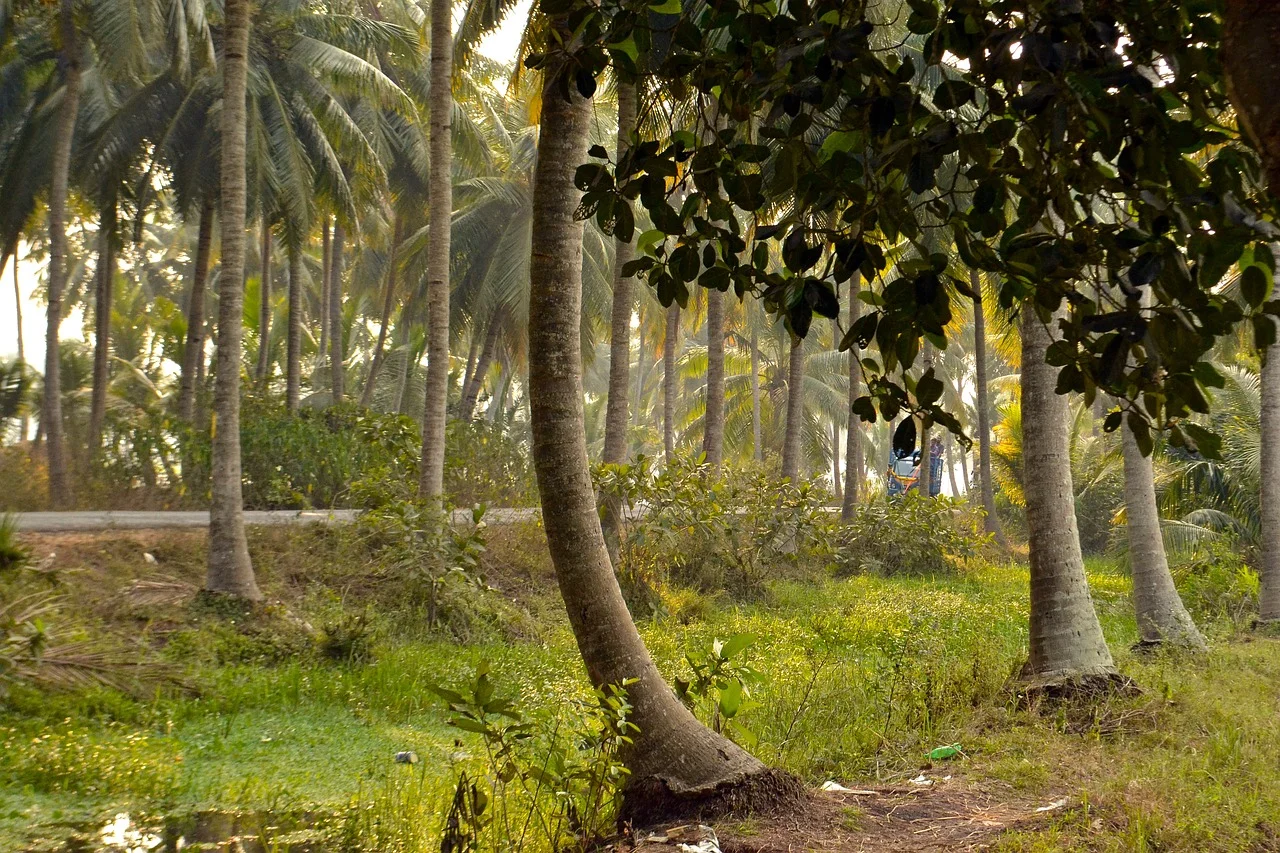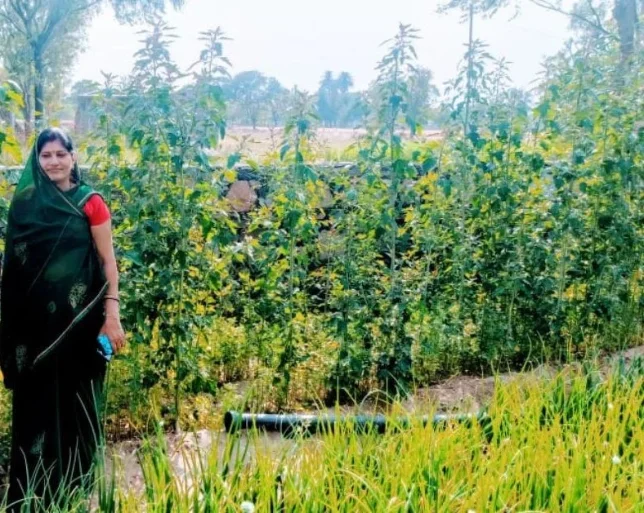During the COVID-19 pandemic, Rishabh Gupta worked at Mashreq Bank in Dubai after finishing his Computer Science degree. Feeling lonely far from home, he returned to Delhi. His parents, Rashmi and Rakesh Arya, had also relocated to Shamsabad, Agra (Uttar Pradesh) during the lockdown.
“Once I got back home, I made up my mind not to return. I was keen on exploring opportunities here, and organic farming seemed promising since our family owns about 3 acres of land in Shamsabad,” explained Rishabh, who is 27 years old.
At a similar time, Rishabh’s younger brother, Ayush Gupta, finished his BBA at the University of London and came back to India. Both brothers enrolled in online courses on vegetable farming at the Centre of Excellence for Vegetables in Gharaunda (Karnal), an Indo-Israel Project sanctioned by the Ministry of Agriculture.
The attraction to agriculture
“Following that, we established a polyhouse in January 2021 and began cultivating the English cucumber variety using organic methods. By March 2021, we were harvesting the vegetables, selling them for Rs40 to Rs45 per kilogram,” remembered Rishabh. However, they aimed to establish an agricultural enterprise to ensure steady income year-round.

“We didn’t want to limit ourselves to traditional farming methods. That’s when we started exploring mushroom cultivation,” he explained. Rishabh and Ayush didn’t undergo any formal training for this venture. Instead, they watched numerous videos featuring international experts and fellow farmers engaged in mushroom cultivation.
Also Read: From Shoes to Saffron: My Inspiring Journey into Aeroponic Saffron Farming
Farmers cultivate various types of mushrooms like Button, Oyster, and Shiitake. Mushrooms can be grown in two ways – either seasonally or year-round in cold chambers.
“In India, cold chambers aren’t widely used for mushroom farming yet. However, this method allows for year-round production due to controlled environmental factors such as temperature and humidity,” explained Rishabh.
“We opted for this approach because it minimizes the risk of contamination and ensures a steady daily income,” Rishabh added.
However, persuading their father wasn’t easy. “We had to demonstrate the concept to convince our dad. In September 2021, we purchased 20 compost bags (used as the growing medium for mushrooms) and spawns (mushroom seeds) through a friend. The outcomes were promising, and our father agreed to expand our Button mushroom cultivation,” explained Ayush, aged 24.

In April 2022, the brothers started arranging the setup for mushroom farming. They designated one acre of land for the cold chamber, compost preparation unit, packaging facility, and more.
They decided to use PUF panels to construct 12 chambers. PUF panels consist of three layers of galvanized steel sheets. These panels are crucial in the prefabricated construction sector, known for their resistance to oxidation and antimicrobial properties.
“Each chamber measures 70 feet by 18 feet,” Rishabh explained, “with vertically stacked racks that are 62.5 feet long and 5 feet wide. We’ve installed air conditioners in each room to regulate the temperature.”
“As the mushrooms grow, we lower the temperature in each chamber from 24°C to 13°C,” he continued. “While each room can accommodate 3500 beds, we typically use 3000 beds at a time.” Rishabh mentioned that they financed the project through their savings and a bank loan.

“Presently, we harvest an average of 1600 kilograms of mushrooms daily,” Rishabh shared, “of which 1300 kilograms are ‘A’ grade mushrooms—mature, well-shaped, and trimmed. The remaining 300 kilograms are ‘B’ grade mushrooms, which aren’t uniformly shaped and are sold to food processing companies for canning.”
Also Read: Assam Techie Builds Rs 22 Crore Egg Business
“In the summer, prices can soar up to Rs180 per kilogram, but they drop as low as Rs90 per kilogram in the winter months,” he explained. “On average, we sell at Rs134 per kilogram annually,” he added. This means their daily earnings amount to Rs 2.144 lakh (Rs 134 X 1600 kg).
“After factoring in electricity, composting, and staff salaries, our production cost per kilogram comes to Rs90,” he elaborated, “leaving us with a daily profit of Rs44 per kilogram or Rs70,400.”
They’ve established partnerships with companies and wholesalers for direct procurement, which reduces transportation costs. “In the future, we aim to establish our own facility for mushroom canning to tap into the export market,” the mushroom entrepreneur mentioned.
Mushroom cultivation process
“The foundation for mushroom growth, known as compost, is created in our unit using wheat straw, chicken manure, and gypsum,” explained Rishabh. “Chicken manure serves as a readily available source of nitrogen and other essential nutrients vital for robust mushroom growth.”
“We start by soaking wheat straw in water for several days. Then, we incorporate chicken manure, gypsum, and potassium to form mushroom compost,” Rishabh detailed. “The crucial next step involves pasteurizing the compost.”

Pasteurizing the compost is essential as it eliminates any insects, fungi, or pests that might be present, along with removing ammonia produced during composting.
“Following pasteurization, we blend mushroom spawns with the compost. We typically mix about 35 tonnes of compost with 350 kilograms of seed,” he added, mentioning that they currently source spawns from growers instead of producing them in-house.
“We fill compost into polythene bags, each with two or three holes for ventilation,” explained the agripreneur.
“Every bag contains at least 10 kilograms of compost mix, and they’re arranged on racks within the cold chamber,” he added.
Within 12 days, mushroom fungus mycelium spreads throughout the bags. During this period, the chamber’s temperature is maintained at 23 to 24 degrees Celsius.

“Afterward, the bags are opened, and we apply casing using materials like coco peat (natural fibers derived from coconut husks, which retain water) and gypsum,” he described. “Casing serves as a top layer applied to the compost with the spawn to control evaporation. It’s typically around 1.5 to 2 inches thick, providing the base for mushroom growth.”
“At this point, the temperature is lowered to 5 to 10 degrees. The mycelium disappears, and tiny mushroom sprouts, known as pinning, begin to grow,” explained Rishabh.
“After pinning, the mushrooms double in size every 24 hours,” he added. “Mushrooms are typically ready for harvest 21 days after casing. Then, they’re picked and prepared for sale.”
For aspiring mushroom entrepreneurs, Rishabh emphasizes the importance of identifying a market for selling the produce before starting production. “The key aspect of mushroom entrepreneurship is having buyers lined up because the product has a very short shelf life. You can’t start searching for a market after production,” he emphasized.
“While we’re considering mushroom canning as one of our future plans, we’re also exploring the possibility of producing our own spawns or mushroom seeds in-house,” mentioned Rishabh.









